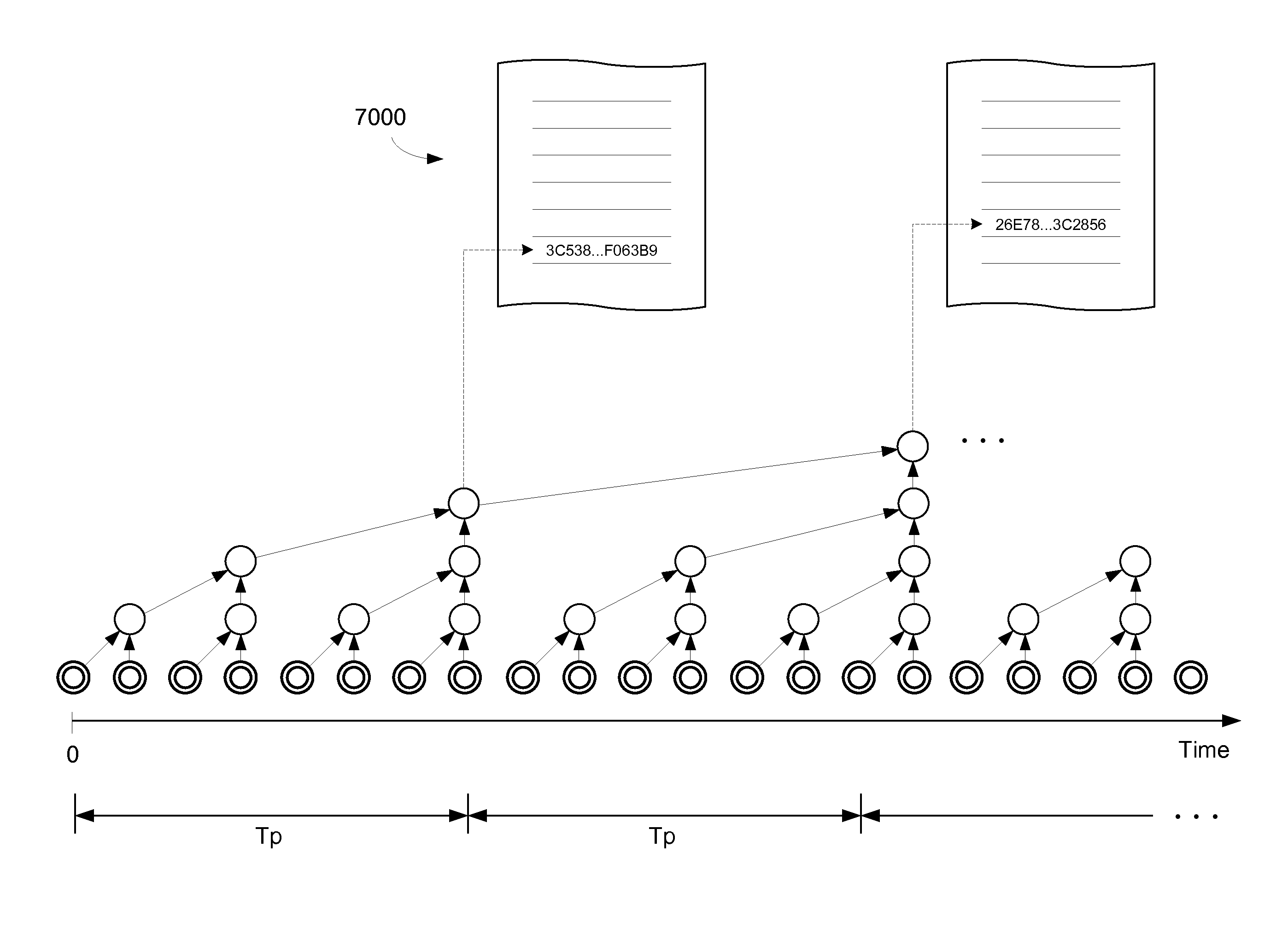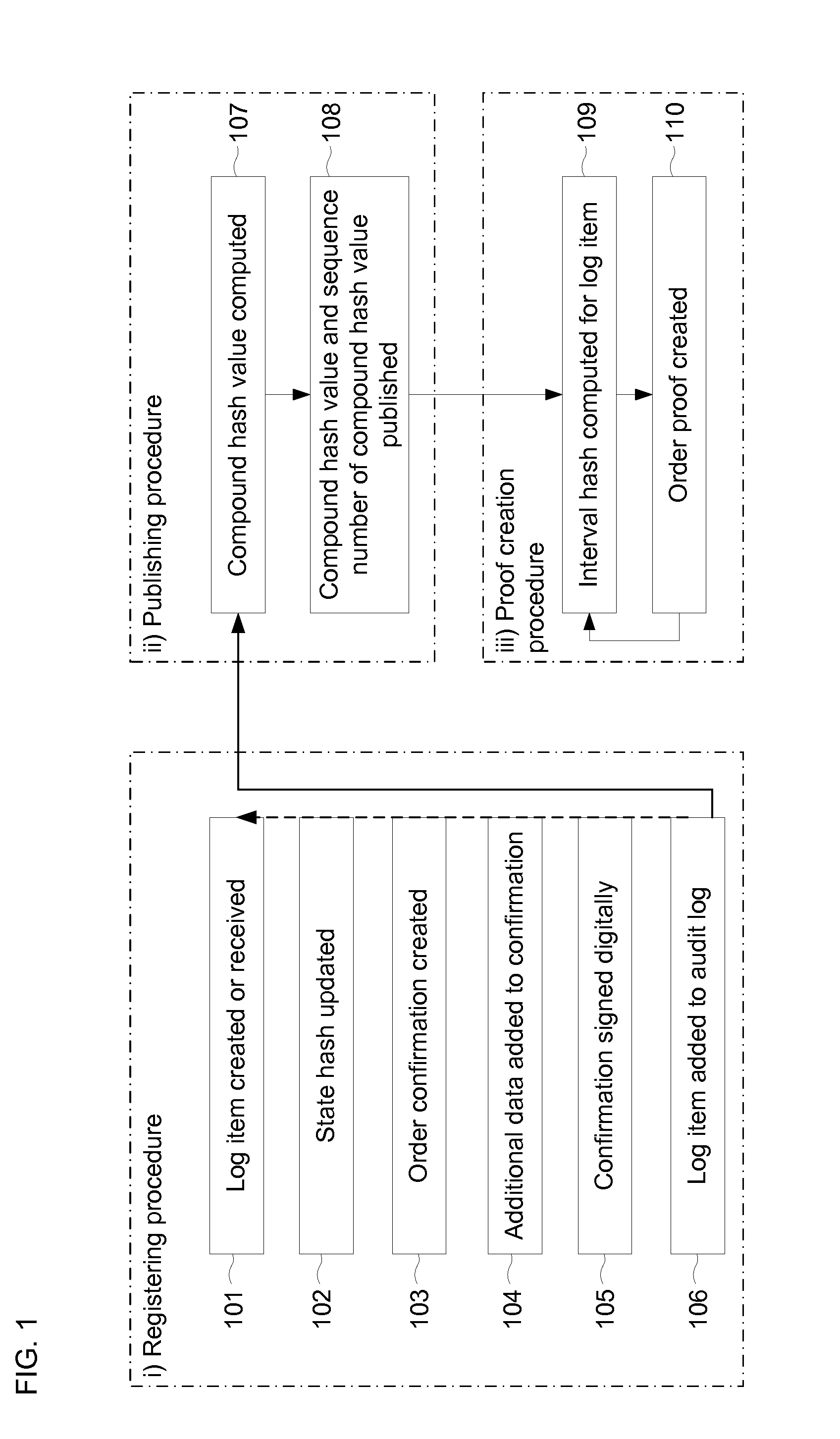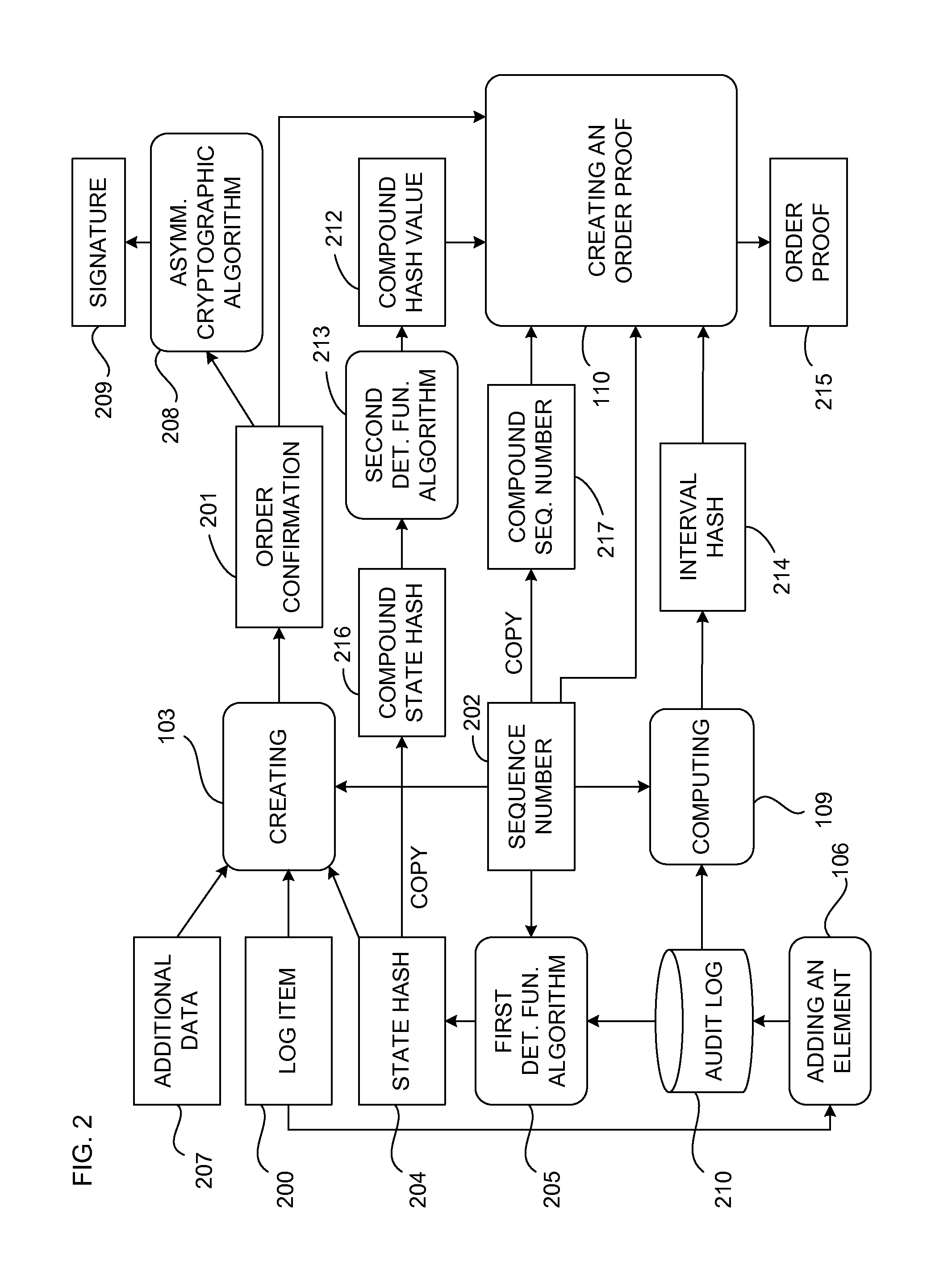Document verification with distributed calendar infrastructure
a calendar infrastructure and document verification technology, applied in the field of electronic document security, can solve the problems of increasing the need and the difficulty of document verification in the electronic age, and the inability to verify the authenticity of documents (defined, digitized information set)
- Summary
- Abstract
- Description
- Claims
- Application Information
AI Technical Summary
Benefits of technology
Problems solved by technology
Method used
Image
Examples
Embodiment Construction
[0029]As is explained below, the general infrastructure for verifying the authenticity of documents according to this invention has different layers. For the sake of succinctness, the uppermost layer, which will typically be controlled by a service provider or administrator, is referred to here as the “core”. Users who submit documents for registration or later verification comprise the lowermost layer, that is, whatever systems they use to input such documents; this will be referred to below as the “input” or “user” layer. In between the user and core layers is an aggregation layer. Again, these are explained further below.
[0030]FIGS. 1-13 relate primarily to the core layer. FIG. 1 illustrates three functionalities for the core. The first functionality is the registration of a new digital record. In step 101, the new digital record is created or received. A digital record is a representation of a “document,” that is, data item, which can represent any type of digital information. F...
PUM
 Login to View More
Login to View More Abstract
Description
Claims
Application Information
 Login to View More
Login to View More - R&D
- Intellectual Property
- Life Sciences
- Materials
- Tech Scout
- Unparalleled Data Quality
- Higher Quality Content
- 60% Fewer Hallucinations
Browse by: Latest US Patents, China's latest patents, Technical Efficacy Thesaurus, Application Domain, Technology Topic, Popular Technical Reports.
© 2025 PatSnap. All rights reserved.Legal|Privacy policy|Modern Slavery Act Transparency Statement|Sitemap|About US| Contact US: help@patsnap.com



